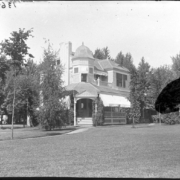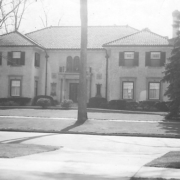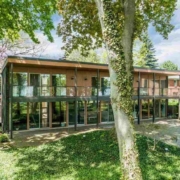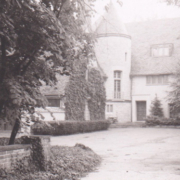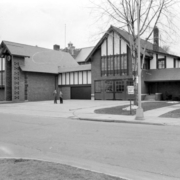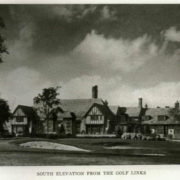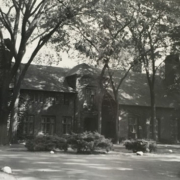Historical Architecture of Grosse Pointe – The Early Summer Residences of Detroit’s Industrialists
Last week we presented the ‘Lake Terrace’ residences of John S. Newberry Sr. and Senator James McMillan. The two men were pivotal in the industrial growth of Detroit and inspiring the residential transformation of Grosse Pointe as an exclusive summer location for wealthy families from Detroit.
This week we continue the story of the early summer homes built in Grosse Pointe with a review of the prominent industrialists who followed the example of John S. Newberry and James McMillan by having year-round homes on East Jefferson, and seasonal residences next to the lake in “The Pointe” as it was known 120 years ago. Source: Thomas A. Arbaugh, Tonnancour, Volume II.
The majority of these summer dwellings were built towards the end of the 19th century, and were large-scale cottages constructed of both brick and/or wood. The properties had majestic names that were either personal to their owners or had a link to the land/estate where they were situated. The following properties are some examples of the early residences built for industrialists with some ever-lasting names:
Summerside – built in 1850 – by George V. N. Lothrop, United States Minister at St. Petersburg, Russia. Mr. Lothrop was impressed with the beauty of The Pointe soon after his arrival in Detroit, and purchased 130 acres in 1850. Rare specimens of old trees, and orchards of the finest fruits adorned the grounds, which gracefully sloped toward the road. Source: Grosse Pointe On Lake Sainte Claire, by Silas Farmer, 1886. Image courtesy: the Grosse Pointe Historical Society.
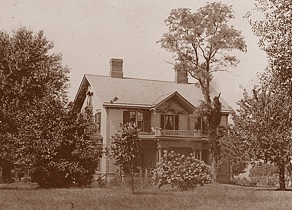
Tonnancour – built in 1880 – by T. P Hall, a commodities broker and grain merchant. The property consisted of sixty-three acres, about fifteen of which were devoted to lawn and garden, twenty-five to pasture, and the remainder to natural forest. Part of the property included an eye-catching summer residence – a Victorian Swiss Chalet style mansion, designed by Mortimer L. Smith, along with a Swiss style boathouse. In 1909, Theodore Parsons Hall passed away, survived by his wife, Alexandrine, and three children. Around five years later their beautiful Victorian home burned down. Following the fire Alexandrine moved to a residence in Detroit while her new home, 383 Lakeshore was completed. During this time the Hall estate was sub divided. A section of the land became part of the Country Club’s golf course, while each of Hall’s three children (Josephine, Nathalie and Marie) built homes on the lake front sections of the property – Josephine Hall Irvine (403 Lakeshore – completed in 1915, now razed); Nathalie Hall Scott (moved into her mother’s home 383 Lakeshore, the original home is now razed), and Marie Hall Fuger (395 Lakeshore – completed in 1914, now 55 Tonnancour Place). Source: Thomas W. Brunk, courtesy of the Grosse Pointe Historical Society. Image Courtesy of: The Burton Historical Collections, Detroit Public Library.
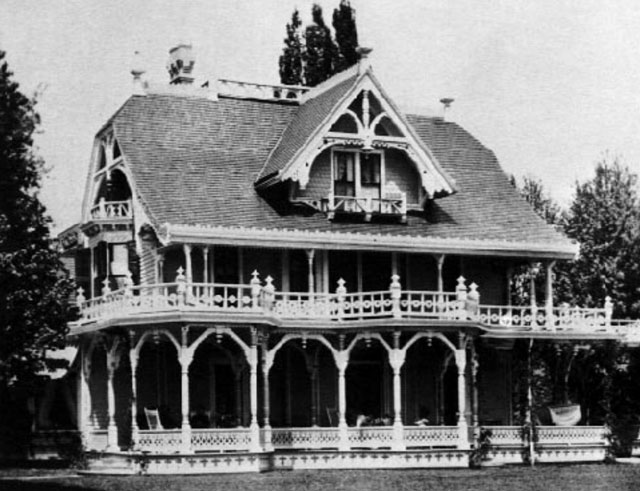
Bellevue – built in 1882 – by William B. Moran, president of the Peninsula Stove Company, and Detroit Electric Light and Power. The house was located on a property close to ten acres in size. Mr. Moran also owned several large farms along the Grand Marais. Image courtesy: the Grosse Pointe Historical Society.

Cloverleigh was a fifty acres estate that was the location of two almost identical homes. The first, built in 1882, located on the upper half of the property, was the residence of Hugh McMillan, secretary and treasurer of the Telephone and Telegraph Construction Company and Michigan Bell Telephone, and president of the Commercial National Bank and of the National Electric Traction Company. Hugh was the brother of James McMillan.

The second residence, also built in 1882, was located on the lower half of the estate and belonged to H. B. Ledyard president of the Michigan Central Railroad. Source: Grosse Pointe On Lake Sainte Claire, by Silas Farmer, 1886. Image courtesy: the Grosse Pointe Historical Society.
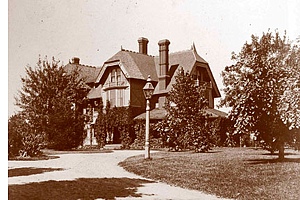
Otsikita Villa – built in 1882 – by W. K. Muir, president of the Michigan Central Railroad. It is reported Mr. Muir originally rented Otsikita Vila for use as a summer property. However, in 1882, Mr. Muir decided to become a permanent resident in Grosse Pointe, so he purchased the home and rebuilt the residence. ‘Otsikita’ was once the Indian name for Lake Sainte Claire. Source: Grosse Pointe On Lake Sainte Claire, by Silas Farmer, 1886. Image courtesy: the Grosse Pointe Historical Society.
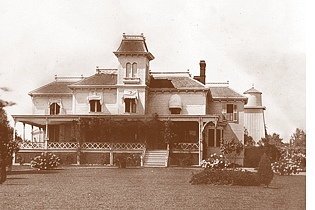
Edgemere – built in 1882 – by Joseph Berry, a co-owner of Berry Brothers Paint and Varnish, president of Detroit Linseed Oil Company, and of the Combination Gas Machine Company. Edgemere was one of the earliest year-round residences to be constructed In Grosse Pointe. Joseph Berry hired famed Detroit architects Mason & Rice to design his new home. It was designed in Mason & Rice’s favored Richardson Romanesque approach – constructed from pressed brick and cut stone it featured the dark masonry and detailed brickwork associated with this style. Many of the walls were covered in ivy to replicate the English manor look – the first in a long series of English Manor Houses to adorn Grosse Pointe during that era. The 15-acre estate included extensive gardens awash with formal flowerbeds, luscious lawns, quiet lagoons, unusual varieties of trees, fruit trees, shrubs along with a huge greenhouses and a potting shed. The greenhouses were home to Berry’s prized collection of orchids, and when not tending to his flowers Berry grew most of his own produce. The gardens and the greenhouses were open to the public on Sunday afternoons and it is believed the property had one of the first automatic in-ground sprinkler systems in the area. The grounds stretched from Lake St Clair to Kercheval and from McKinley Road to Sunset Lane. In 1942, the house was demolished, however many of the beautiful trees Joseph Berry lovingly cared for remain. Source: Tonnancour, Volume I. Image courtesy: the Grosse Pointe Historical Society.
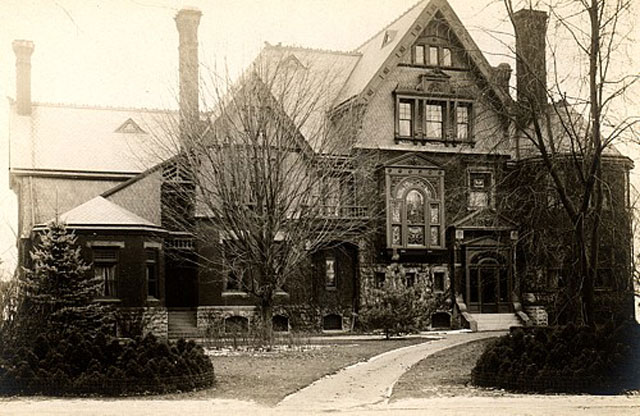
The Poplars – built in 1884 – by W. A. McGraw, a successful real estate developer, and head of a prosperous wholesale boot and shoe company, he was considered one of the most leading and influential men in the city. The Poplars – named after a row of Lombardy poplar trees – was located on a massive ten-acre lot that was originally a ribbon farm stretching from Lake St.Clair to Grosse Pointe Blvd. The original design was a pretty cottage created in the Shingle Style with a wrap-around porch, bay windows and a turret – as depicted in the photo below. It is reported the interior of the home was a model of convenience. It is not clear of the size and the layout of the original home, but it is believed there were 14 rooms, including 5 bedrooms. In 1924, Percival Dodge purchased the property. In 1927, extensive remodeling was done to the façade by prominent Grosse Pointe architect Robert O. Derrick to become the handsome Colonial home that still exists today at 71 Lake Shore.

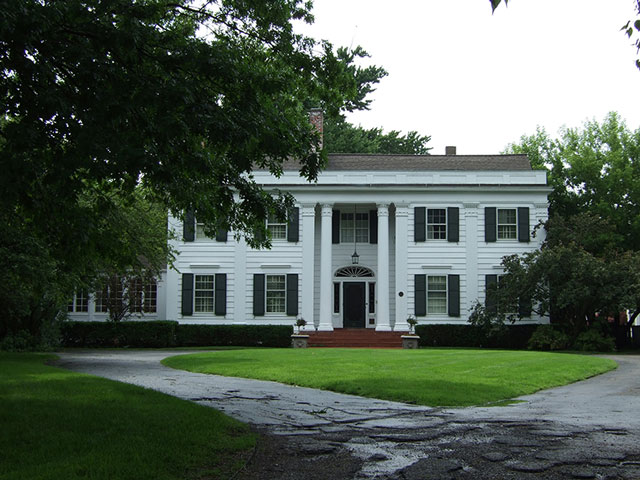
While the majority of these summer residences are now but a distant memory the names of many of the prominent industrialists who helped transform Grosse Pointe are remembered in the street names found in Grosse Pointe: Lothrop, Hall Place, Moran, McMillan, Muir.
*Photos courtesy of the Higbie Maxon Agney archives unless stated.
Written by Katie Doelle
Copyright © 2020 Katie Doelle

